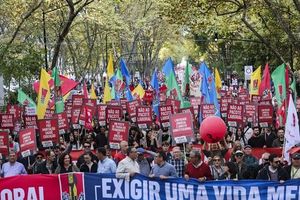On a chilly January afternoon in South Brooklyn, a routine traffic stop would set off a series of events that would come to symbolize the shifting landscape of U.S. immigration enforcement in 2025. J.I.T., a 26-year-old Guatemalan construction worker who had lived in the United States for a decade, was pulled over by NYPD officers while riding an unregistered moped. What followed was not just a personal ordeal but a microcosm of the broader, rapidly changing realities faced by immigrants under the Trump administration’s renewed crackdown on non-citizens.
According to THE CITY, J.I.T.’s arrest for minor violations—driving on a suspended license, operating without insurance, and possessing a forged license plate—led to his fingerprinting and subsequent detention by U.S. Immigration and Customs Enforcement (ICE). His experience, now stretching into eight months of confinement in an Orange County detention center, is far from unique. As the Trump administration intensifies its efforts, even minor infractions in so-called sanctuary cities like New York can now trigger ICE intervention, despite local laws that nominally restrict cooperation with federal immigration authorities.
J.I.T.’s brother, Erwin, speaking to THE CITY, captured the family’s anguish: “But they’re going to shut him up for eight or nine months, just because of a moped. It’s not just.” For J.I.T., who had inspired his siblings to seek a better life in the U.S. and supported his family back in Guatemala, the sudden loss of freedom has been devastating. His siblings, fearful of their own immigration status, have been unable to visit him, relying instead on phone calls and the hope that justice—or at least compassion—will prevail.
But J.I.T.’s story is just one thread in a much larger tapestry. Across the country, the Trump administration’s approach to immigration has shifted dramatically, with ripple effects felt from military families to the nation’s labor market. On October 15, 2025, the deportation of a U.S. Marine’s father in California drew national attention to new policies that ended long-standing protections for military families. Under President Joe Biden, ICE had considered military service by recruits or their immediate family members a “significant mitigating factor” in deportation cases—a policy designed to support recruitment and maintain morale among service members, as reported by the Associated Press.
That changed in February 2025, when a Trump administration memo declared that immigration authorities “will no longer exempt” groups previously afforded leniency, including the families of service members and veterans. Margaret Stock, a military immigration law expert, explained that the decision could have far-reaching consequences: “The immigration benefits for a recruit and their family were key to expanding the military’s ranks, and recruitment would suffer without them.” The Marine Corps itself has told recruiters they are not authorized to imply that enlisting could secure immigration relief for applicants or their families.
This policy reversal comes at a time when the U.S. military is already struggling to meet recruitment targets. As of last year, an estimated 40,000 individuals were serving in the military without citizenship, a testament to the armed forces’ historic reliance on immigrant communities. The loss of immigration incentives threatens to exacerbate recruitment woes, raising questions about the future composition and readiness of the nation’s defense forces.
Meanwhile, the Trump administration’s broader immigration crackdown has had profound economic implications. On October 16, 2025, the Federal Reserve’s Beige Book reported that restrictive immigration policies were causing acute labor shortages in critical sectors such as agriculture, construction, and manufacturing. The St. Louis Federal Reserve Bank highlighted the plight of a Memphis construction firm facing “higher labor costs and project delays due to a reduction in available labor.” In Philadelphia, staffing agencies struggled to fill positions vacated as workers left out of fear of deportation. The Atlanta Fed noted that the impact of policy changes and enforcement raids was “more material than previously reported,” particularly in regions like south Georgia.
These disruptions have not gone unnoticed by national and international economic authorities. Federal Reserve Chairman Jerome Powell conceded that the labor market was weak, describing it as “low hire, low fire” due to ongoing uncertainty. The International Monetary Fund’s chief economist, Pierre-Olivier Gourinchas, explained that the sharp reduction in the share of foreign-born workers amounted to a “negative supply shock” that, along with tariffs, was weighing on U.S. economic output. “What the reduction in the labor supply does is, it is creating tightness in the labor market. It is adding pressures in the labor market. It is potentially adding cost. It is reducing output,” Gourinchas said. The IMF has revised down its estimate of U.S. potential growth, reflecting the diminished contribution from the foreign labor force.
Beyond domestic enforcement, the Trump administration has also expanded its use of third-country deportations. In the week before October 15, 2025, the administration sent 10 individuals—including Vietnamese, Filipino, and Cambodian nationals—to Eswatini, an African nation now hosting 15 deportees under this new program. According to NextShark, these removals, which began in July 2025, are part of a broader strategy that has transferred over 40 individuals to countries such as Ghana, Rwanda, South Sudan, and Uganda.
These third-country deportations have sparked legal challenges and human rights concerns. While the government defends the policy as necessary due to some countries’ refusal to accept their own citizens, critics point to the lack of due process. In April 2025, U.S. District Judge Brian Murphy ruled that the administration violated constitutional rights by not providing migrants a “meaningful opportunity” to challenge removal under the UN Convention against Torture. Nevertheless, the Supreme Court allowed deportations to continue in June while litigation proceeds. Human rights organizations, including Human Rights First, have struggled to maintain contact with deportees, as local authorities in countries like Eswatini have blocked attorney access. U.S.-based immigration attorney Tin Thanh Nguyen lamented, “I cannot call them. I cannot email them. I cannot communicate through local counsel because the Eswatini government blocks all attorney access.”
The financial side of these arrangements is also notable. Documents reviewed by Human Rights Watch indicate that the U.S. agreed to pay Eswatini $5.1 million for accepting up to 160 deportees, while El Salvador received about $6 million to detain 238 alleged Venezuelan gang members for one year. The administration has reportedly contacted at least 58 countries about accepting deportees, using diplomatic levers such as travel bans, tariffs, and restrictions to secure cooperation.
Back in the U.S., the effects of these sweeping changes are visible in everyday life. The automation of arrest records and fingerprint data, as seen in J.I.T.’s case, has made it easier for ICE to target individuals for deportation—even for minor offenses and before any conviction. As Sarah Vendzules of the Legal Aid Society told THE CITY, “Low-level arrests triggering ICE enforcement before the person had been convicted had been rare before this year. Now the agency is bragging about rounding up all these criminals, and so it doesn’t really matter to them if it’s somebody who bought a motorcycle with a fake plate, as long as they can say he’s a criminal.”
As families wait anxiously, advocates fight legal battles, and businesses adjust to labor shortages, the human and economic costs of the Trump administration’s evolving immigration policies continue to mount. For J.I.T. and thousands like him, hope persists—but so does uncertainty, as the nation grapples with the consequences of its choices.





